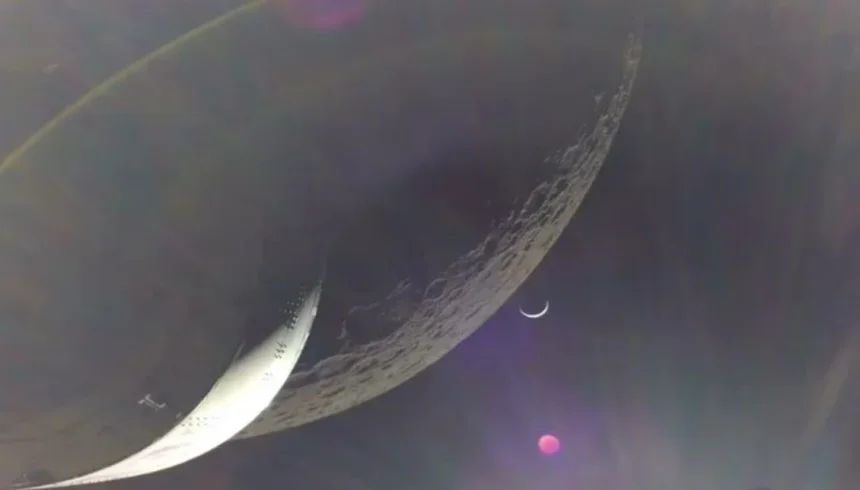Monday marked the start of the Artemis-1 mission’s return journey as NASA’s Orion spacecraft made a close pass of the Moon and used a gravity boost to whip itself back towards Earth.
The unmanned capsule tested manoeuvres that would be used on later Artemis missions that bring people back to the planetary body. At its closest point, the capsule was less than 80 miles (130 kilometres) from the surface.
When the capsule was behind the far side of the Moon, which is more cratered than the near side and was first seen by humans during the Apollo period, communication with it was cut off for 30 minutes. Despite not landing there, this area of the Moon is more cratered than the near side.
To set the gumdrop-shaped Orion on a path toward Earth, the European Service Module, which powers the capsule, fired its main engine for more than three minutes.
It was the mission’s final significant manoeuvre, which started on November 16 when NASA’s huge Moon rocket SLS took off from Florida. The journey should take 25 and a half days to complete.
On Sunday, December 11 at 9:40 a.m. local time, Orion will now only perform minor course changes before splashing down in the Pacific Ocean off San Diego. After that, it will be retrieved and raised onto a US Navy ship.
Earlier in the mission, Orion spent around six days in a “distant retrograde orbit”—a high-altitude orbit that moves opposite to the way the Moon orbits Earth.
The habitable spacecraft Orion just travelled 280,000 miles (450,000 kilometres) from Earth, breaking the old record.
The heat shield of the spacecraft must endure temperatures of nearly 5,000 degrees Fahrenheit (2,800 degrees Celsius), or almost half the surface of the Sun, upon re-entry into Earth’s atmosphere.
The United States is attempting to establish a long-lasting presence on the Moon as part of the Artemis program—named after the sister of Apollo in Greek mythology—to prepare for a subsequent Mars mission.
Once again without landing, Artemis 2 will involve a crewed mission to the Moon.
The first woman and man are set to arrive on the lunar south pole during Artemis 3, which is expected to launch no earlier than 2025, but will most likely be much later due to scheduling delays.












